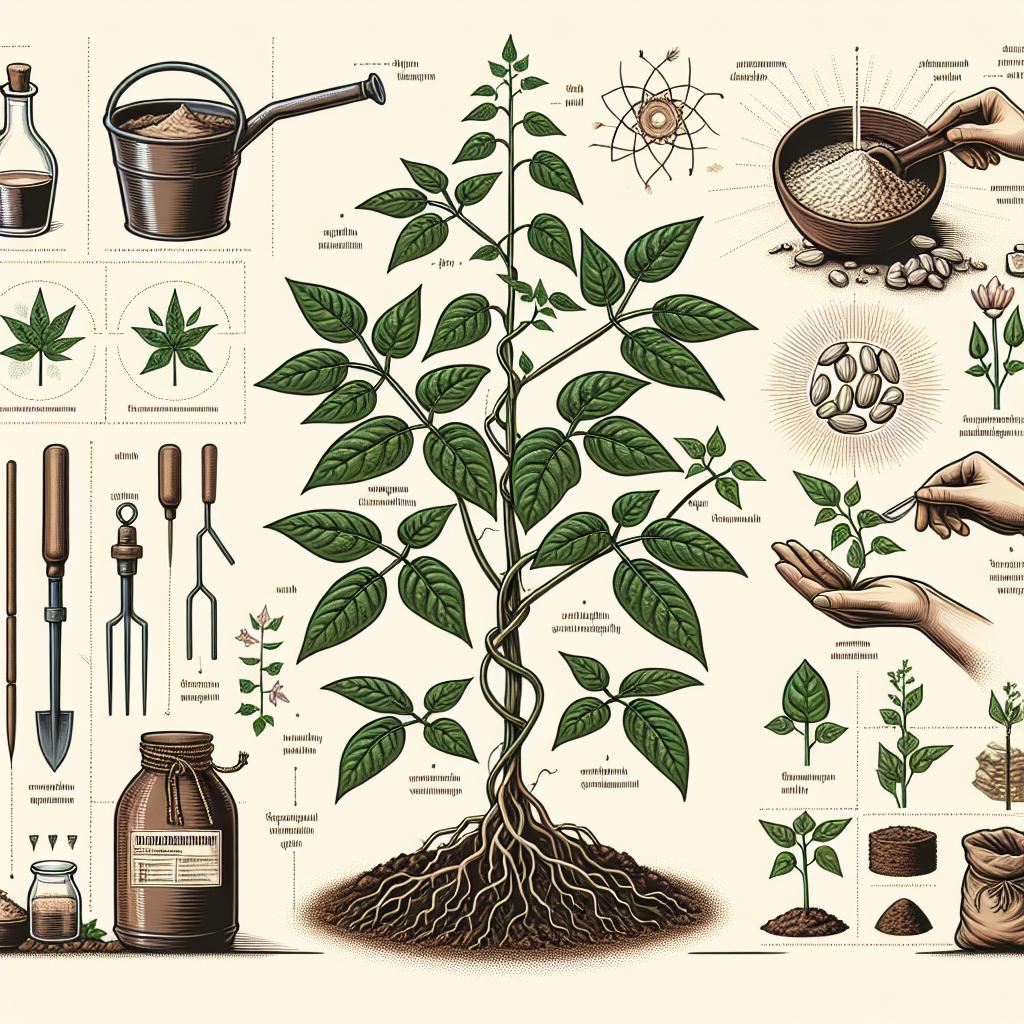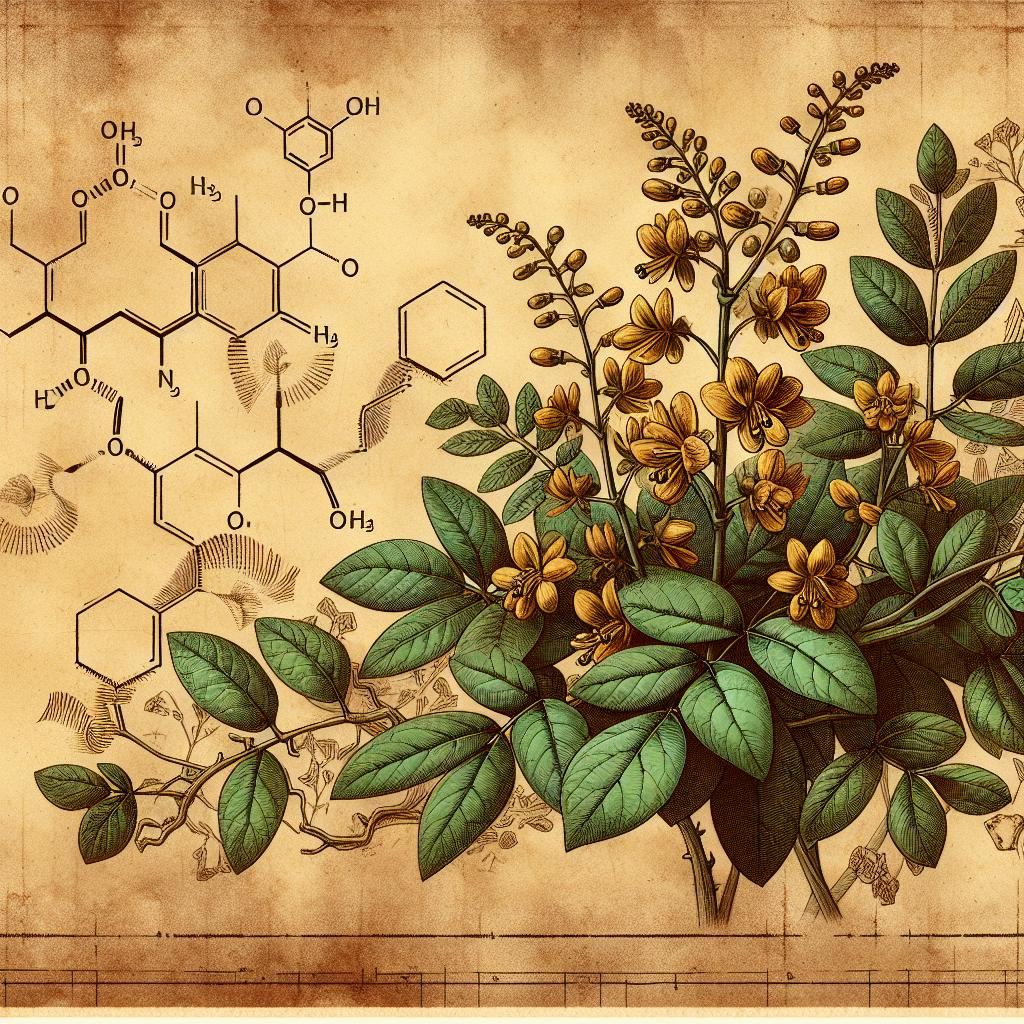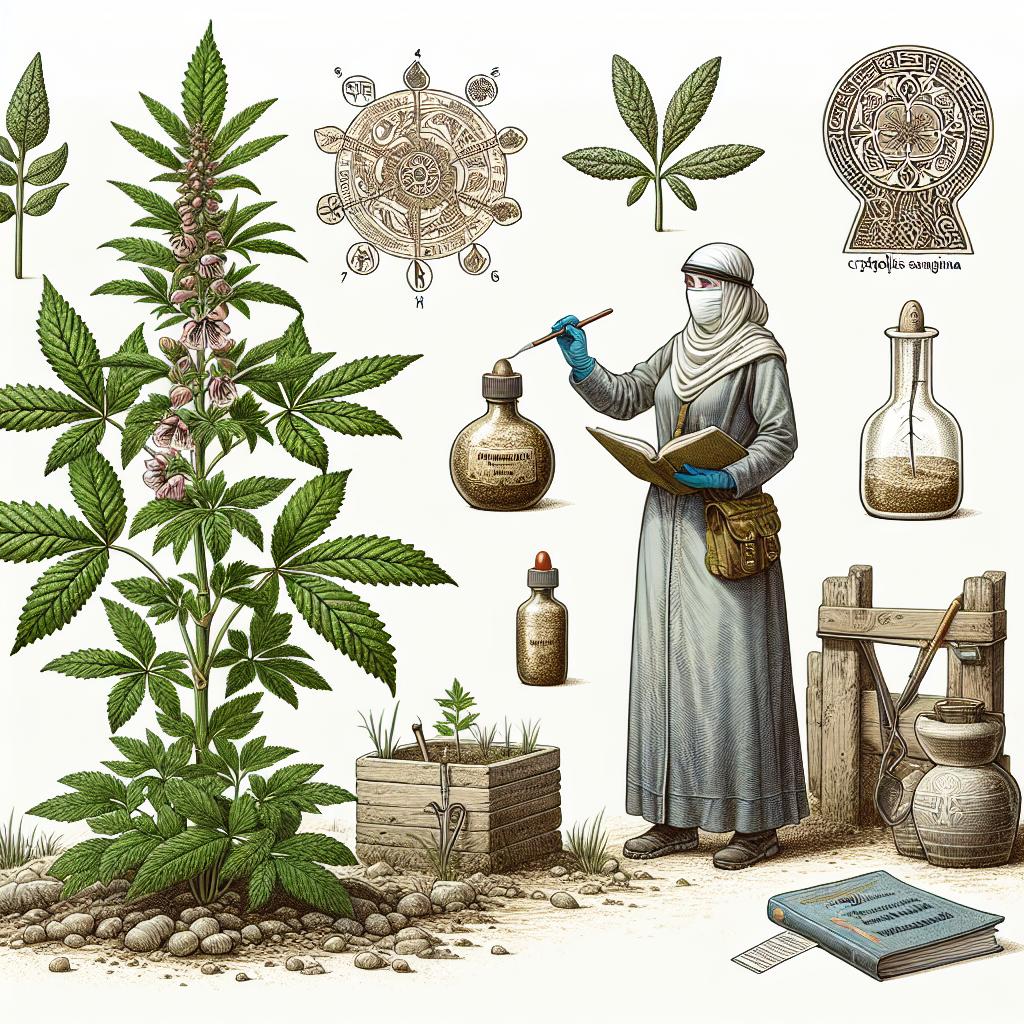Cryptolepis sanguinolenta, commonly known as the “bloodroot” or “Nigerian quinine,” is a perennial vine native to tropical regions of West Africa. This plant has garnered significant attention in ethnobotanical studies due to its extensive medicinal uses and cultural significance among indigenous communities. In recent years, scientific research has unveiled intriguing discoveries surrounding the indoloquinoline alkaloids found in Cryptolepis sanguinolenta, adding a new layer of interest for both researchers and herbal enthusiasts alike.

Medicinal Uses of Cryptolepis sanguinolenta
Cryptolepis sanguinolenta is a treasure trove of medicinal properties, making it a cornerstone of traditional medicine in many West African cultures. This section delves deeper into the various medicinal properties attributed to this remarkable plant, exploring its effects on different health conditions and the bioactive compounds responsible for these benefits.
1. Antimalarial Properties
One of the most well-documented medicinal uses of Cryptolepis sanguinolenta is its antimalarial effect. The plant has been traditionally used to treat malaria, a disease caused by the Plasmodium parasite. The active compounds, particularly the indoloquinoline alkaloids, have shown promise in inhibiting the growth of Plasmodium falciparum, the most virulent strain of malaria.
Recent studies have indicated that these alkaloids may interfere with the parasite’s ability to replicate, thereby reducing the severity of the disease. The traditional preparation of the plant, often involving decoction or infusion of the roots, is believed to enhance the bioavailability of these active compounds, making them more effective in combating malaria.
2. Antimicrobial Activity
Cryptolepis sanguinolenta exhibits significant antimicrobial properties, making it effective against a range of bacterial and fungal infections. Research has shown that extracts from the plant can inhibit the growth of various pathogens, including Escherichia coli and Staphylococcus aureus.
This antimicrobial activity is attributed to the presence of flavonoids, tannins, and other phytochemicals in the plant. Traditional healers often use Cryptolepis sanguinolenta to treat gastrointestinal infections, skin infections, and other microbial diseases, highlighting its importance in local healthcare practices.
3. Anti-inflammatory Effects
Inflammation is a common underlying factor in many chronic diseases, and Cryptolepis sanguinolenta has been recognized for its anti-inflammatory properties. The plant contains compounds that may inhibit the production of pro-inflammatory cytokines, thereby reducing inflammation in the body.
This property makes Cryptolepis sanguinolenta a potential candidate for managing conditions such as arthritis, asthma, and other inflammatory disorders. Traditional applications often involve the use of the plant to alleviate pain and swelling, showcasing its role as a natural anti-inflammatory agent.
4. Antioxidant Activity
Oxidative stress, caused by an imbalance between free radicals and antioxidants in the body, is linked to various health issues, including cancer and cardiovascular diseases. Cryptolepis sanguinolenta has demonstrated potent antioxidant properties, which can help neutralize free radicals and protect cells from damage.
The antioxidant activity of the plant is attributed to its high phenolic content, which scavenges free radicals and enhances the body’s defense mechanisms. This property not only supports overall health but also contributes to the plant’s potential role in preventing chronic diseases.
5. Gastrointestinal Health
The use of Cryptolepis sanguinolenta for gastrointestinal issues is well-established in traditional medicine. The plant is believed to possess astringent properties, making it effective in treating diarrhea and dysentery.
By reducing intestinal motility and inhibiting the growth of pathogens, Cryptolepis sanguinolenta can help restore gut health. Additionally, its anti-inflammatory and antimicrobial effects further support digestive health, making it a valuable remedy for various gastrointestinal disorders.
6. Antihypertensive Effects
Emerging research suggests that Cryptolepis sanguinolenta may have antihypertensive properties, making it beneficial for managing high blood pressure. Some studies have indicated that extracts from the plant can help relax blood vessels and improve circulation, thereby lowering blood pressure levels.
This property is particularly important in regions where hypertension is prevalent, and access to conventional medications may be limited. Traditional healers often incorporate Cryptolepis sanguinolenta into their treatment regimens for individuals with hypertension, emphasizing its role in holistic health practices.
7. Potential Anticancer Activity
Recent studies have begun to explore the anticancer potential of Cryptolepis sanguinolenta, particularly its indoloquinoline alkaloids. Preliminary research suggests that these compounds may induce apoptosis (programmed cell death) in cancer cells and inhibit tumor growth.
While more research is needed to fully understand the mechanisms behind these effects, the initial findings are promising. The traditional use of Cryptolepis sanguinolenta as a health tonic may be rooted in its potential to support overall wellness and combat chronic diseases, including cancer.
Preparation Methods

The preparation of Cryptolepis sanguinolenta for medicinal use is a crucial aspect of its traditional application. Various methods exist to extract the plant’s active compounds, with each preparation method tailored to specific health needs and cultural practices.
1. Decoction
One of the most traditional and widely used methods for preparing Cryptolepis sanguinolenta is through decoction. This method involves boiling the roots, leaves, or stems in water to extract the plant’s active constituents.
Preparation Steps:
- Harvesting: Fresh or dried roots and leaves are collected.
- Chopping: The plant material is chopped into smaller pieces to enhance extraction.
- Boiling: The chopped plant material is added to a pot of water and brought to a boil. It is then simmered for 20-30 minutes.
- Straining: After boiling, the mixture is strained to remove solid particles, leaving behind a concentrated liquid.
- Consumption: The decoction can be consumed warm or allowed to cool, and it is often sweetened with honey or mixed with other herbs for improved taste.
Uses: Decoctions are commonly used for treating malaria, gastrointestinal issues, and infections, allowing for a potent extraction of the plant’s bioactive compounds.
2. Infusion
Infusion is another popular method for preparing Cryptolepis sanguinolenta, particularly for those who prefer a milder preparation. This method involves steeping the plant material in hot water, similar to brewing tea.
Preparation Steps:
- Harvesting: Fresh or dried leaves are collected.
- Chopping: The leaves may be crushed or torn to enhance extraction.
- Steeping: The plant material is placed in a container, and boiling water is poured over it. The mixture is then covered and allowed to steep for about 10-15 minutes.
- Straining: The infusion is strained to remove the plant material.
- Consumption: The resulting liquid can be consumed as a tea, often enjoyed with honey or lemon for flavor.
Uses: Infusions are typically used for general health promotion, digestive support, and mild infections, providing a gentler alternative to decoctions.
3. Tincture
Tinctures are concentrated herbal extracts made by soaking the plant material in alcohol or another solvent. This method preserves the plant’s active compounds and allows for easy dosage.
Preparation Steps:
- Harvesting: Fresh plant material (roots or leaves) is collected.
- Chopping: The plant material is chopped finely to increase surface area.
- Soaking: The chopped material is placed in a glass jar and covered with alcohol (usually vodka) or a mixture of alcohol and water. The jar is sealed and allowed to sit for several weeks, shaking it occasionally.
- Straining: After the soaking period, the mixture is strained to remove the solid plant material, leaving behind a potent liquid extract.
- Storage: The tincture is stored in a dark glass bottle to protect it from light.
Uses: Tinctures are often used for more precise dosing and can be added to water or taken directly. They are commonly used for treating infections, inflammation, and other health conditions.
4. Powdered Form
Another preparation method involves drying and grinding the roots or leaves into a fine powder. This powdered form can be consumed directly or added to food and beverages.
Preparation Steps:
- Harvesting: Fresh roots or leaves are collected.
- Drying: The plant material is dried in a shaded, well-ventilated area to prevent degradation of active compounds.
- Grinding: Once dried, the material is ground into a fine powder using a mortar and pestle or a grinder.
- Storage: The powdered form is stored in an airtight container to maintain freshness.
Uses: The powdered form can be mixed into smoothies, soups, or herbal capsules, making it a versatile option for those who prefer not to consume liquids. It is often used for its health benefits, including immune support and digestive health.
5. Topical Applications
In addition to internal consumption, Cryptolepis sanguinolenta can also be prepared for external use. The plant is often used in poultices or infused oils for treating skin infections, wounds, and inflammation.
Preparation Steps:
- Harvesting: Fresh leaves or roots are collected.
- Crushing: The plant material is crushed or ground to release its juices.
- Application: The crushed material can be applied directly to the affected area, or it can be mixed with a carrier oil (such as coconut or olive oil) to create an infused oil for topical use.
Uses: Topical applications are commonly used for skin irritations, infections, and wounds, leveraging the antimicrobial and anti-inflammatory properties of the plant.
Recent Discoveries: Indoloquinoline Alkaloids

One of the most exciting developments in the study of Cryptolepis sanguinolenta is the discovery of indoloquinoline alkaloids residing within these plants. These compounds, which have been isolated from the plant, exhibit a range of biological activities, including antimalarial, anticancer, and antimicrobial properties. The identification of these alkaloids has opened new avenues for research, with scientists investigating their mechanisms of action and potential therapeutic applications.
Indoloquinoline alkaloids are a class of compounds that are structurally complex and are known for their ability to interact with various biological targets. Preliminary studies suggest that these alkaloids may inhibit the growth of Plasmodium falciparum, the parasite responsible for the most severe form of malaria. This discovery not only reinforces the traditional use of Cryptolepis sanguinolenta as an antimalarial agent but also highlights its potential as a source of novel therapeutic agents.
Moreover, the exploration of these alkaloids aligns with the growing interest in natural products as a source of new drugs. With the increasing resistance of pathogens to conventional treatments, the need for alternative therapeutic strategies has never been more pressing. The indoloquinoline alkaloids found in Cryptolepis sanguinolenta could serve as a valuable addition to the arsenal of treatments against resistant strains of malaria and other infectious diseases.
Cultural Practices Surrounding Cryptolepis sanguinolenta

1. Traditional Healing Practices
In many West African cultures, traditional healers or herbalists are the custodians of knowledge regarding medicinal plants, including Cryptolepis sanguinolenta. These healers often undergo extensive training and apprenticeship to learn about the properties of various plants and their uses in treating ailments.
In Nigeria, traditional healers may prepare specific concoctions of Cryptolepis sanguinolenta to treat malaria. The preparation process is often accompanied by rituals, such as invoking ancestral spirits or performing cleansing ceremonies to ensure that the treatment is effective and that the patient is protected from negative energies.
2. Harvesting Rituals
The act of harvesting Cryptolepis sanguinolenta is often considered sacred. Many communities believe that the plant possesses a spirit or life force, and as such, care is taken during the harvesting process. Specific rituals may be performed to honor the plant and express gratitude for its healing properties.
Before harvesting the roots or leaves, individuals may offer prayers or small offerings, such as food or libations, to the spirit of the plant. This practice is intended to show respect and ensure that the harvest is bountiful and sustainable.
3. Cultural Significance in Rites of Passage
Cryptolepis sanguinolenta can play a role in various rites of passage, including birth, initiation, and healing ceremonies. The plant is often used in rituals designed to promote health and well-being during these significant life events.
In some communities, a decoction of Cryptolepis sanguinolenta may be given to new mothers postpartum to aid recovery and restore strength. This practice underscores the plant’s role in nurturing and supporting life, and it is often accompanied by communal gatherings where stories and wisdom about the plant are shared.
4. Spiritual and Ancestral Connections
Cryptolepis sanguinolenta is sometimes associated with spiritual practices and ancestral veneration. The plant may be used in rituals aimed at connecting with ancestors or seeking guidance and protection.
In certain cultures, the leaves of Cryptolepis sanguinolenta may be burned as incense during spiritual ceremonies. The smoke is believed to carry prayers to the ancestors, and the plant’s medicinal properties are invoked to protect participants from illness and misfortune.
5. Education and Knowledge Transmission
The knowledge surrounding Cryptolepis sanguinolenta is often passed down through generations, forming an integral part of cultural identity. Elders play a crucial role in educating younger members of the community about the plant’s uses and significance.
Community gatherings may include storytelling sessions where elders recount their experiences with Cryptolepis sanguinolenta, sharing anecdotes about its healing effects and the rituals associated with its use. This oral tradition helps to preserve cultural knowledge and fosters a sense of community identity.
6. Integration with Modern Medicine
As awareness of the medicinal properties of Cryptolepis sanguinolenta grows, some communities have sought to integrate traditional practices with modern medicine. This blending of knowledge can enhance healthcare access while respecting cultural practices.
In some regions, traditional healers collaborate with healthcare professionals to provide holistic care that includes both herbal remedies and conventional treatments. Patients may receive education about the benefits of Cryptolepis sanguinolenta alongside prescribed medications, allowing them to make informed choices about their health.
Ethnopharmaceutical and Sustainable Elements
The study of Cryptolepis sanguinolenta is not only significant from a medicinal perspective but also raises important questions about sustainability and the conservation of traditional knowledge. As interest in herbal medicine grows, there is a risk of overharvesting and habitat destruction, which could threaten the survival of Cryptolepis sanguinolenta and other medicinal plants.
Sustainable harvesting practices and the cultivation of Cryptolepis sanguinolenta are essential to ensure its availability for future generations. Efforts to promote sustainable practices can also empower local communities by providing them with economic opportunities while preserving their cultural heritage. By integrating traditional knowledge with modern conservation strategies, it is possible to create a framework for the sustainable use of Cryptolepis sanguinolenta that benefits both local communities and the environment.
Moreover, the exploration of Cryptolepis sanguinolenta’s medicinal properties contributes to the field of ethnopharmaceuticals, where traditional knowledge is combined with scientific research to develop new therapeutic agents. This approach not only acknowledges the value of indigenous knowledge but also promotes the bioprospecting of natural products for drug discovery.
Conclusion
Cryptolepis sanguinolenta stands as a testament to the rich tapestry of traditional medicine and the ongoing quest for new therapeutic agents. Its historical use in treating malaria and other ailments, combined with the recent discoveries of indoloquinoline alkaloids, positions it as a valuable resource in both ethnopharmacology and modern medicine. As we continue to explore the medicinal potential of this remarkable plant, it is crucial to respect and preserve the cultural practices that surround it, ensuring that future generations can benefit from its healing properties while maintaining a sustainable relationship